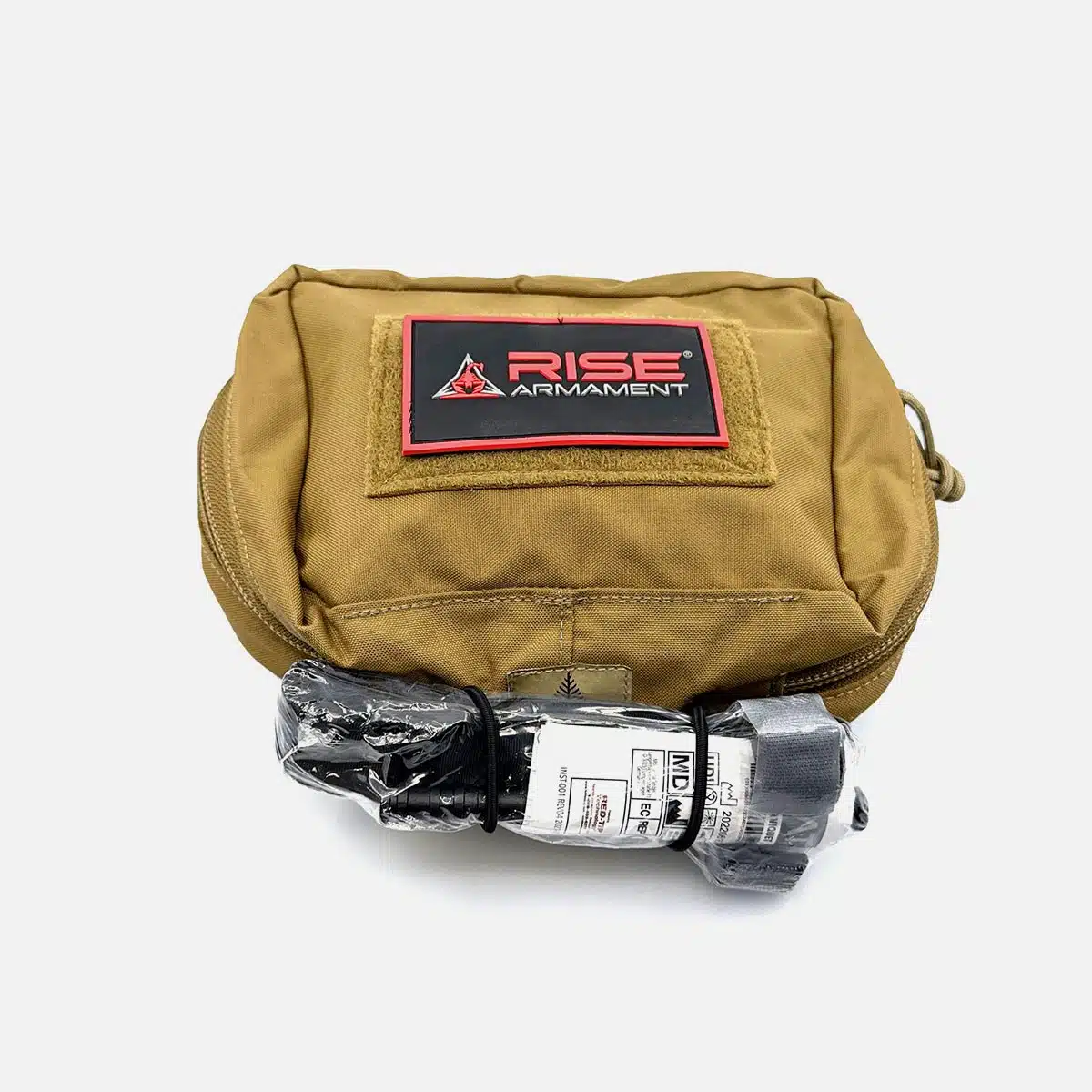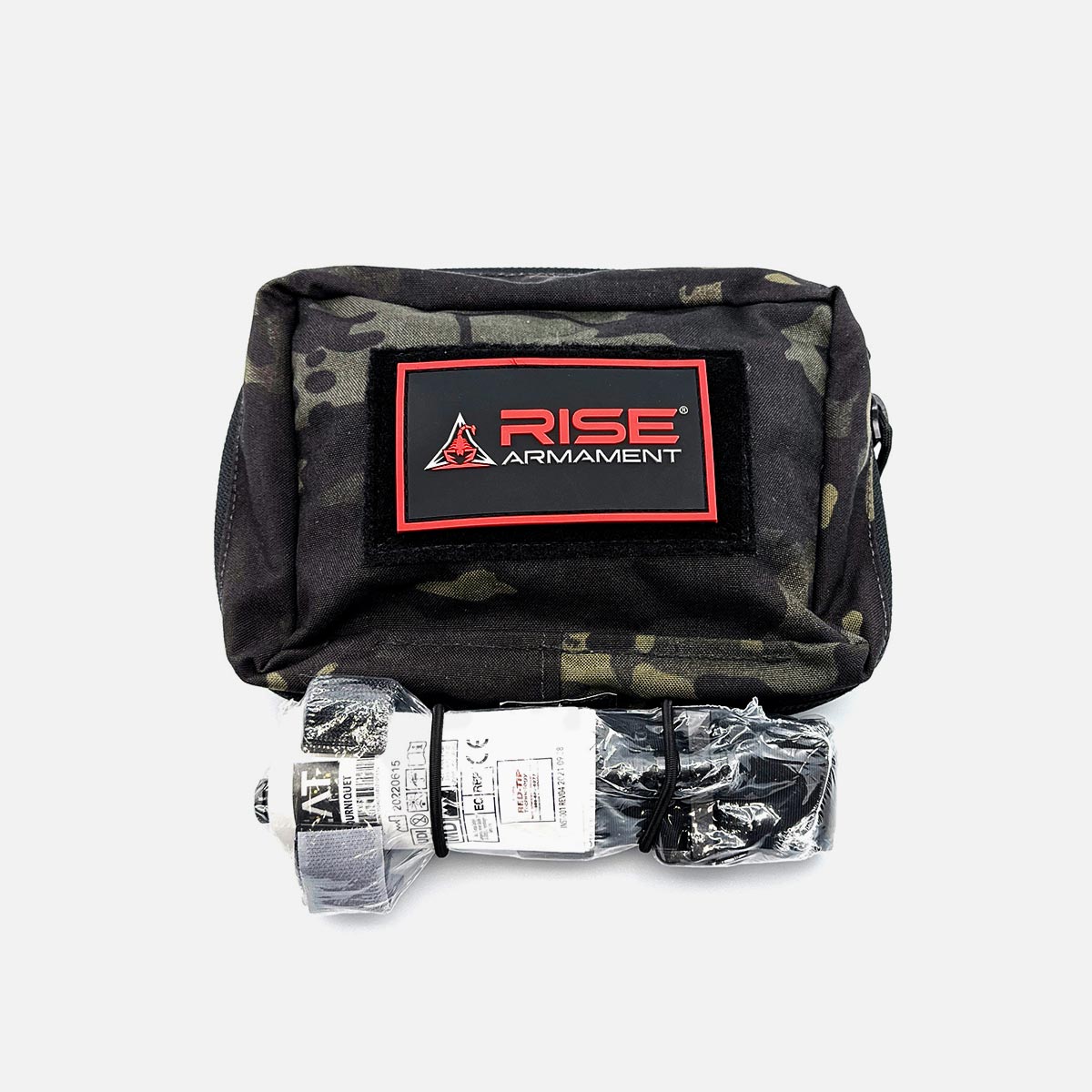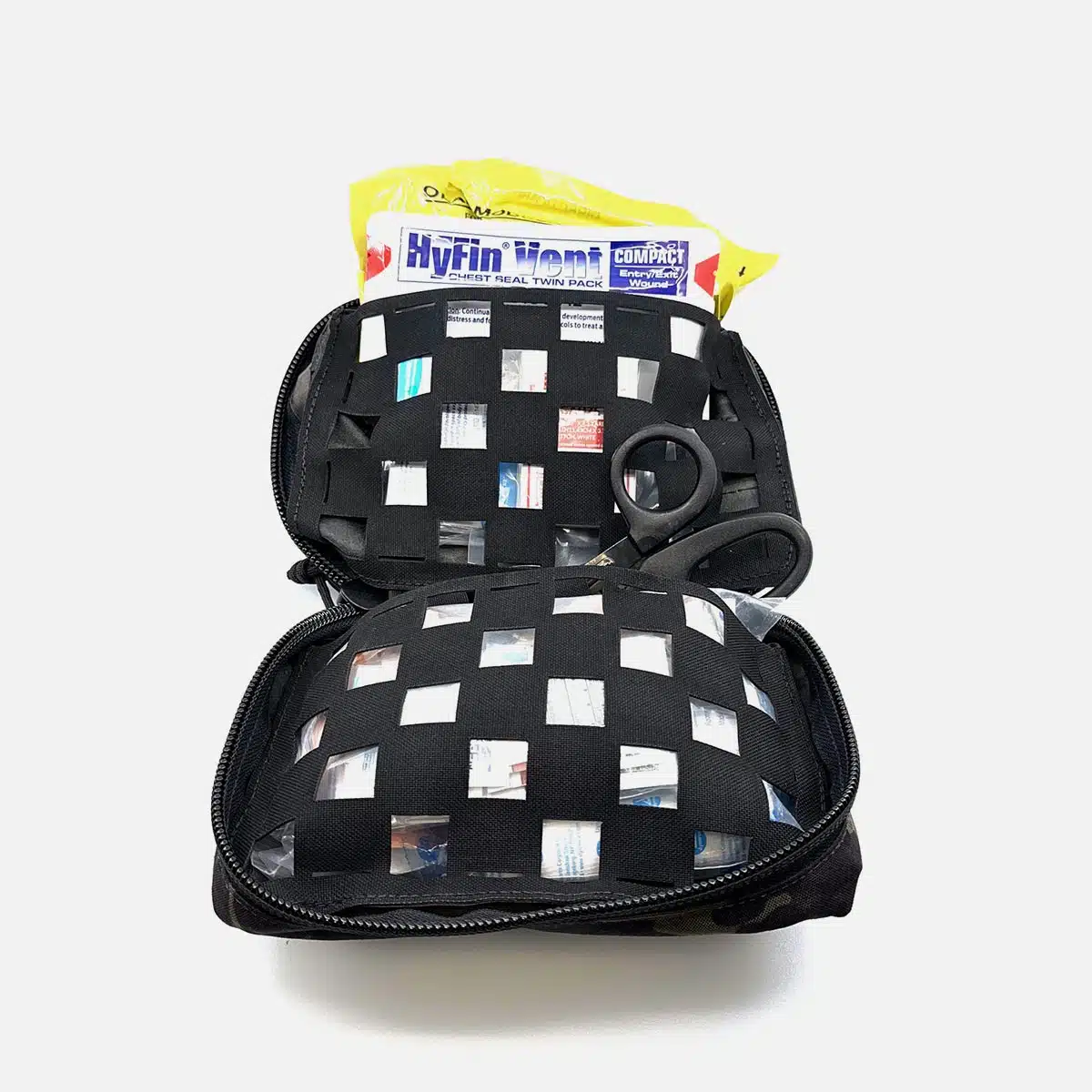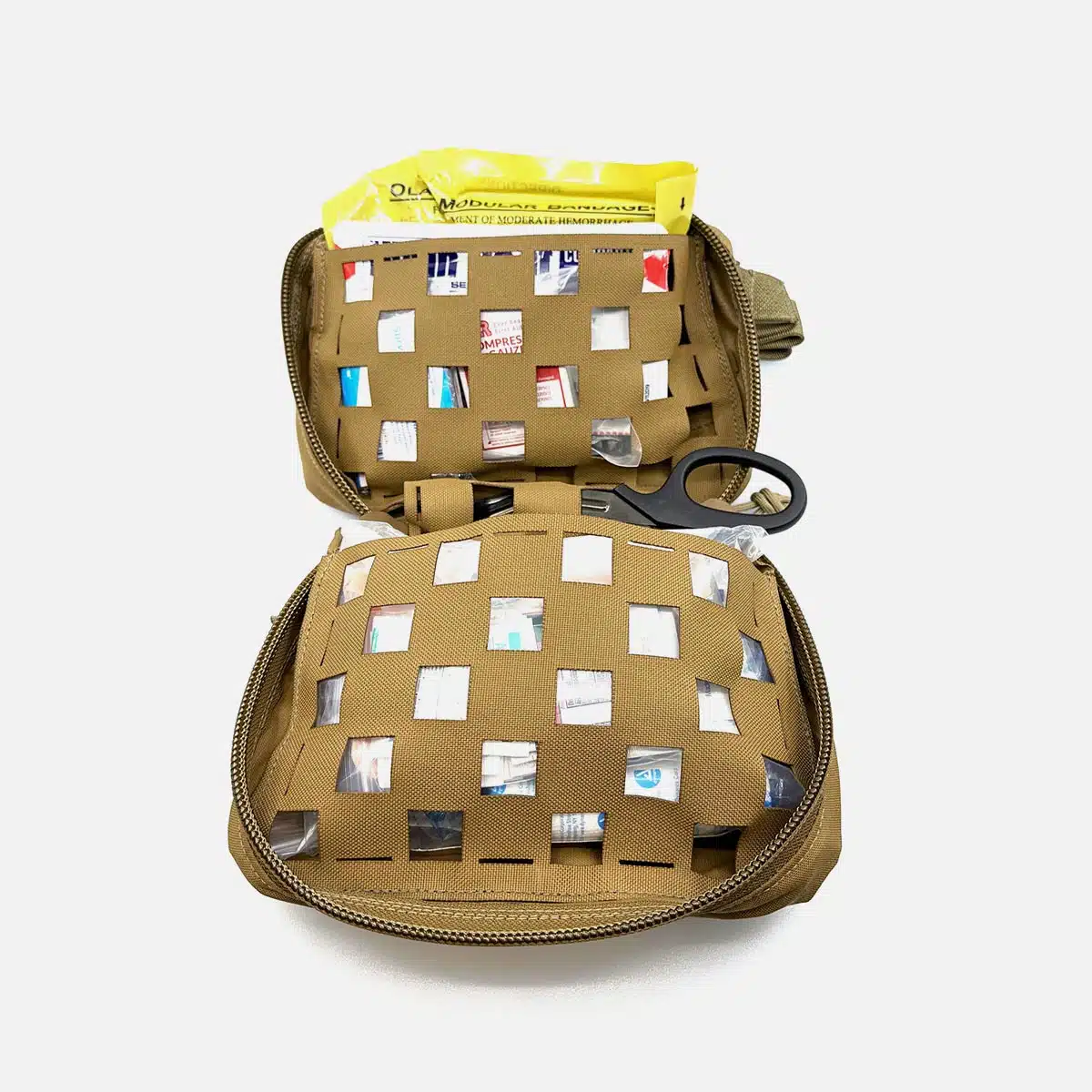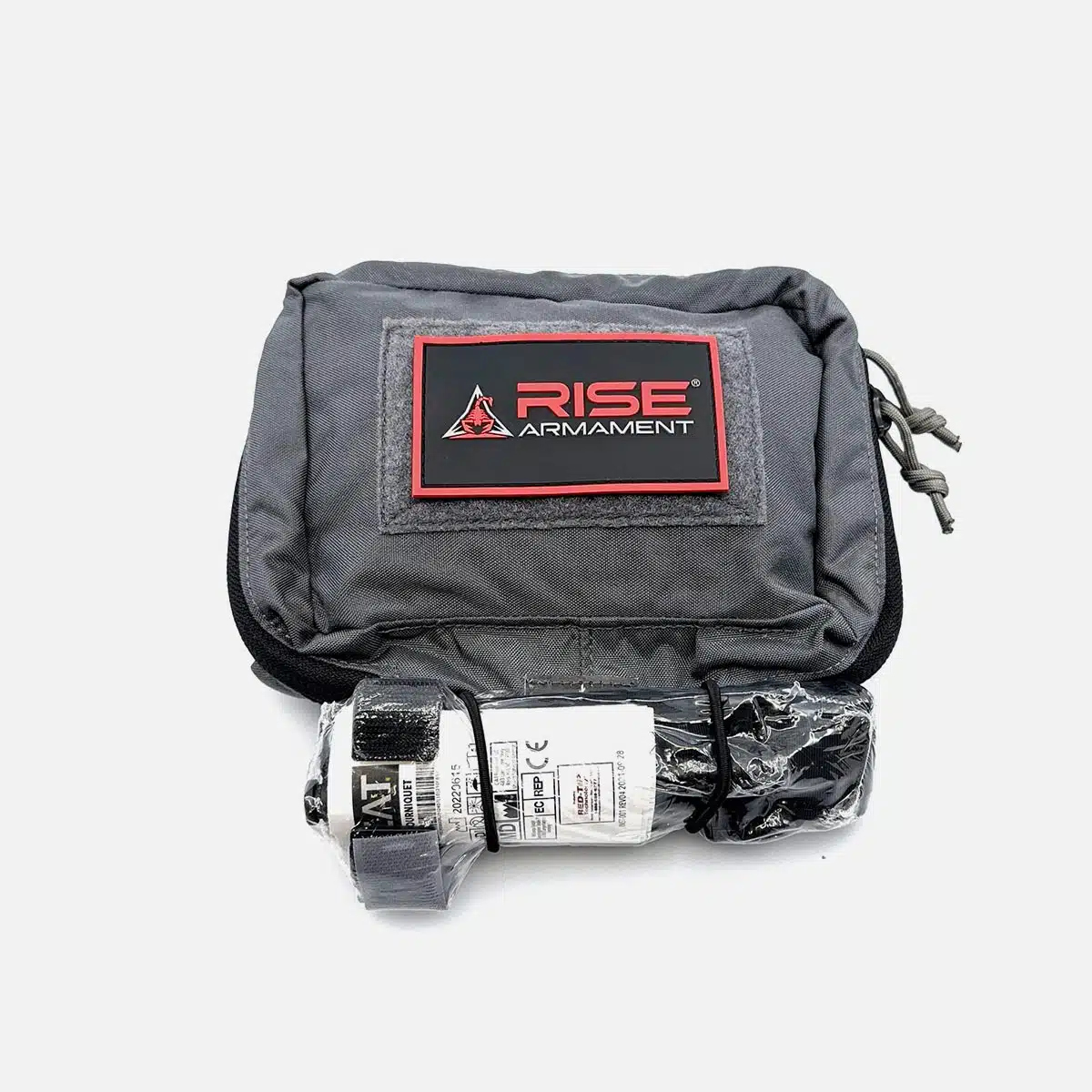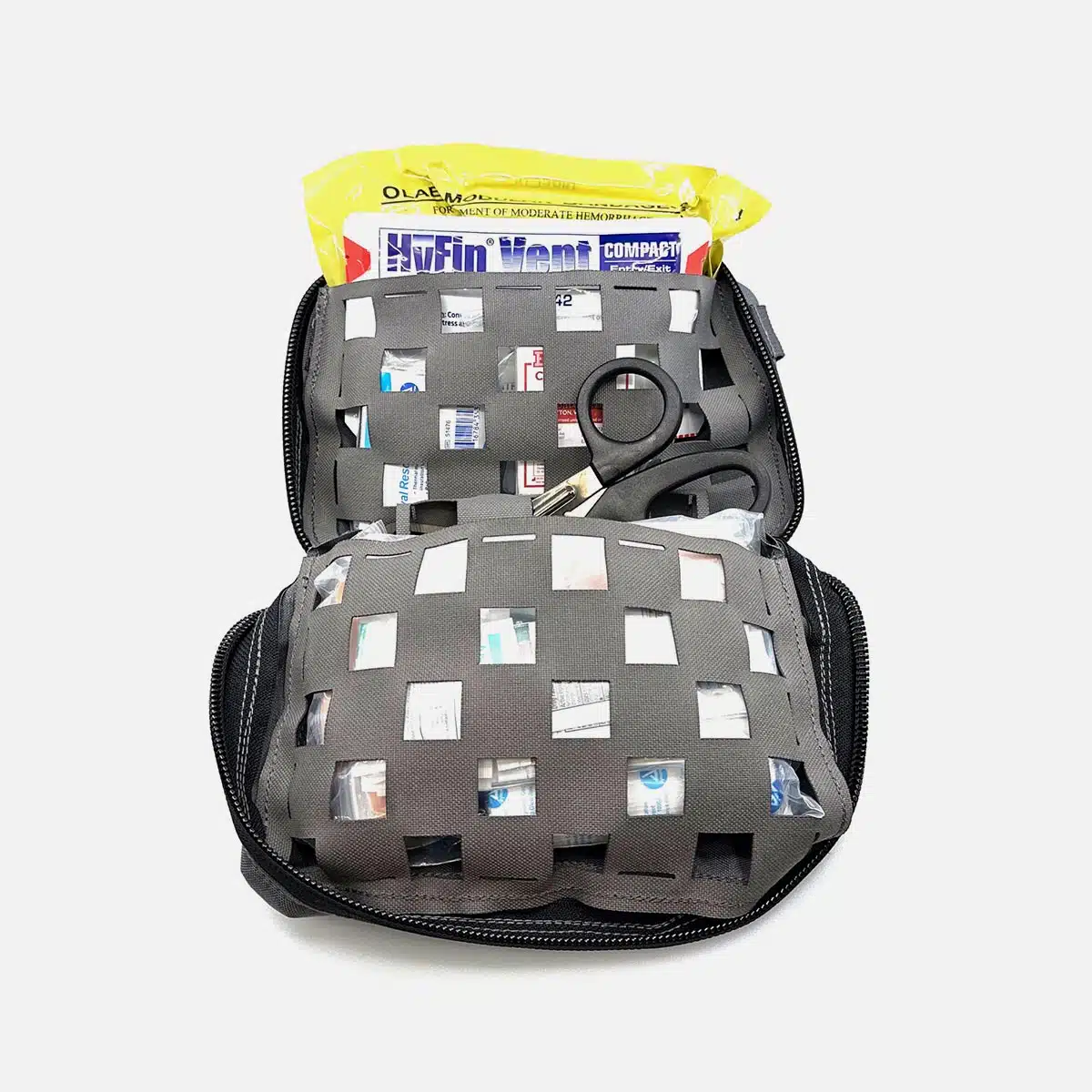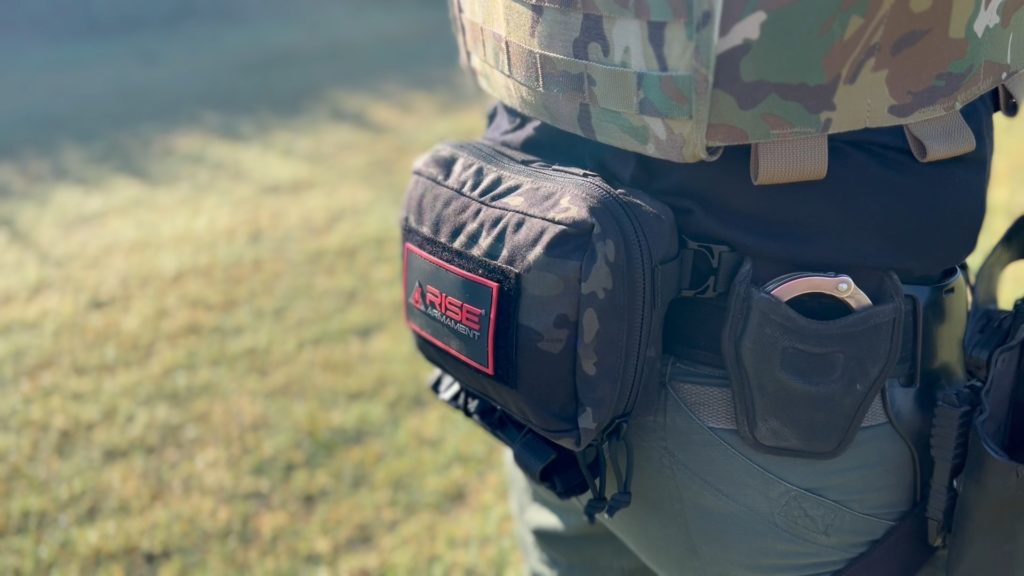Range Med Kit
Essential Gear for the Shooting Range
 EARN 240 REWARD POINTS ON THIS PURCHASEJOIN NOW!
EARN 240 REWARD POINTS ON THIS PURCHASEJOIN NOW!Overview
Why Should You Carry a Range Med Kit?
Everyone should have their own first aid kit. Especially if you own firearms. Accidents happen. Spall bounces off of steel targets. Hot brass lands on exposed skin. Bad hand placement on a grip can result in a “slide kiss”.
At the very least you should have access to a boo-boo kit that lets you treat these common injuries. In addition to boo-boo kits, you should also have the ability to control bleeding, patch holes, and keep injured patients warm.
Where should I put my Range Med Kit?
We wanted a kit that was easily accessible and could also fit in a small pouch. You should want to carry one of these in your range bag or pack it in any vehicles you may take when you go shooting. These kits are a little too big to be part of a concealed EDC kit or on a duty belt.
What Do I Need to Use One of Your Range Med Kits?
First and foremost, you should seek out training. First aid training is just as important as having an individual first aid kit. Handling a medical emergency requires good decision-making just as much as having a chest seal or pressure dressing.
While applying tourniquets and pressure dressings and packing wounds are not difficult skills, it is worthwhile to attend a Stop the Bleed class (or similar training) and get some hands-on experience managing traumatic injuries.
One of the many benefits of training is exposure to simulators that allow you to handle medical emergencies in a safe environment. After you purchase a first aid kit, don’t forget to seek out training.
Life-Threatening Emergencies
This range med kit is more focused on the components of M.A.R.C.H. and injuries that you are likely to encounter during shooting sports than injuries you would get during more generic outdoor activities. That is why we include a tourniquet, pressure dressing, and chest seal, rather than things to manage allergic reactions and joint and bone injuries.
This kit is intended to save lives and manage minor soft tissue trauma:
- gunshot wounds
- penetrating chest trauma
- chest wounds
- severe bleeding
- scrapes and cuts
The Range Med Kit includes a Committee on Tactical Combat Casualty Care (CoTCCC) approved windlass style tourniquet for stopping bleeding on an extremity.
The kit includes an OLAES Pressure Dressing which contains additional wound packing gauze and an occlusive dressing (hidden in the absorptive pad) and a protective eye cup that doubles as a pressure bar.
Compressed gauze is included to facilitate wound packing–which is done in junctional areas like the groin, armpits, and side of the neck. These areas are not accessible for a tourniquet but respond well to focused pressure from a wad of gauze (or gauze stuffed into the opening).
A pair of compact vented chest seals are included to manage penetrating chest trauma. If you need to plug more than two holes, you can use the occlusive dressing found in the pressure dressing.
Other components include trauma shears (which help you expose an injury), an emergency blanket to help keep a patient warm, and a CPR mask to provide a barrier in case you need to give rescue breaths to a patient.
Minor Injuries
All medical kits should have the ability to manage minor injuries. While a pressure dressing is great, sometimes all you need are simple medical supplies like an antiseptic wipe and a band-aid. You are much more likely to see some minor bleeding than a gunshot wound.
Key Features
What Is in the Range Med Kit?
This Range Med Kit includes everything you need to manage life-threatening injuries (like gunshot wounds) from mishaps at the range and also includes band-aids to manage those common injuries.
Our quality supplies and gear are the same ones issued to the military and law enforcement:
- (1) Tourniquet
- (1) Pressure Bandage
- (2) Compressed Gauze (wound packing)
- (1) Chest Seals, pair
- (1) Trauma Shears
- (1) Emergency Blanket
- (3) PVP Prep Pads
- (3) Antibiotic Ointment
- (3) Alcohol Prep Pads
- (3) First Aid Burn Cream
- (3) Hydrocortisone Cream
- (3) Antiseptic Wipes
- (1) Moleskin 2″x5″
- (2) Gauze Pads 2 x 2
- (2) Gauze Pads 3 x 3
- (2) Gauze Pads 4 x 4
- (2) Non-Adhering Pads 2×3
- (2) 5×9 Ab Pads
- (1) Adhesive Tape
- (2) Oval Eye Pads
- (16) 1×3 Cloth Bandages
- (3) Knuckle Bandages
- (3) Fingertip Bandages
- (3) Butterfly Bandages
- (3) Spot Bandages
- (5) Junior Bandages
- (1) CPR Mask
- (2) Non-aspirin Packets
- (2) Ibuprofen Packets
- (2) Antacid Packets
- (2) Pain Relief Packets
- (2) Antihistamine Packets
- (2) Sinus Med Packets
Why No Chest Dart?
Our kit does not include a chest dart because the data simply doesn’t support including one. Most people are not going to encounter a tension pneumothorax (the injury that requires venting of the chest cavity due to penetrating injuries to the chest wall). And diagnosing that condition requires significant training (despite what you may read in blogs and hear from some trainers). A tension pneumothorax takes a while to develop (up to an hour) and even trained paramedics fail to do it correctly.
You might think you need one in your medical kits, not for you to use, but for some random bystander that claims to know how to use one. People that are adept and trained in their use will have their own, and you should not be providing tools for advanced skills to people whose skills you don’t know. You wouldn’t trust a random person to crack a chest open, would you?
This kit is meant to stabilize a person long enough for first responders to arrive, not to manage a grid-down apocalypse where no help is coming…
Why No Airway Adjunct?
This first aid kit is intended for a person with minimal training and at a shooting range (most of which have relatively good access to medical services).
Airway adjuncts like an oral pharyngeal airway or nasopharyngeal airway are more important when you have need to leave a patient alone and are concerned with keeping an airway open–specifically an unconscious patient (or one that may go unconscious). They also have applications with mass casualties (multiple patients).
Airway adjuncts are more important when you are very remote or have to split your focus between several patients.
Why No Combat Gauze?
This kit doesn’t include a hemostatic agent for a couple of reasons. Hemostatic agents are not magic pixie dust. They don’t stop the need for performing the basic actions to manage bleeding. In fact, all they really do is save you a couple of minutes of time while holding pressure.
The way you stop bleeding is to reduce the pressure of the bleeding at the site of the injury and let the body do what it does–form a clot. This can be done by applying direct pressure at the wound, or a tourniquet upstream (if on an extremity).
Combat gauze and other hemostatic agents just save you a little bit of time. We can keep the cost of the kit down and include some additional gauze allowing you more options, rather than include a one-trick pony.
The Range Med Kit is an essential piece of gear for anyone who frequents the shooting range. This comprehensive kit includes everything from massive hemorrhage control to airway management to band-aids, so you can treat life-threatening injuries down to minor scrapes and burns.
We recognize that the best approach to a first aid kit is to tailor it to the needs of the people that will be using it. Many kits on the market have items that don’t make sense. They include tons of band-aids or tactical equipment meant for specific scenarios that require advanced training.

